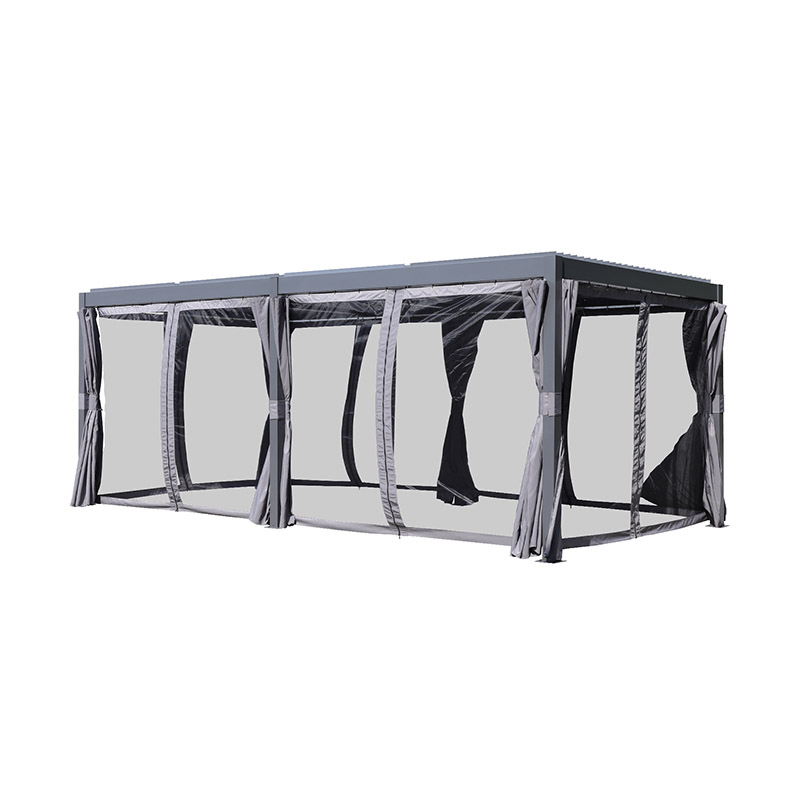2025-10-17
A Louvered Pergola For Patio Use is increasingly viewed as a must-have structure to enhance outdoor living spaces. In 2025, patio owners, designers, and architects show strong interest in louvered pergolas due to adjustable sun control, weather protection, and aesthetic integration.
Louvered Pergola For Patio Use Market Trends
Demand for patio upgrades continues to rise. Google Trends data indicates that search interest in adjustable louvered pergolas peaks during late spring and summer months. Terms such as “motorized louvers” and “all-season pergola patio” appear more often now than in past years. Homeowners in climates that experience sun, rain, wind, or a mix tend toward installations that allow adjustable louvers.
Sales of louvered pergolas built for patios now exceed simple shade structures in many markets. Electric or motorized louvers form a growing share of new designs. Many buyers choose systems that can seal out rain or open to allow airflow. Outdoor living spaces get turned into usable extensions of home interiors, used for dining, entertainment, or quiet relaxation.

Louvered Pergola For Patio Use Design & Functional Features
What design features are most discussed? Adjustable louvers that rotate up to 180 degrees remain highly desired. Motorization appears frequently in online forums and design blogs. Some systems include sensors that close louvers if rain is detected or wind strength crosses a safe threshold.
Roof design tends toward vented panels or dual-tier roofs that allow faster water runoff and better ventilation. Pergolas also gain features such as built-in LED lighting, ceiling fans, and hidden gutters for drainage. Patio users often mention desire for quiet operation, smooth articulation of louvers, and minimal visual bulk. Clean lines, slim frames, and modern color palettes dominate popular design galleries.
Louvered Pergola For Patio Use Material Choices & Sustainability
Material choice emerges often in conversations about durability and maintenance. Powder-coated aluminum is prominent, favored for its resistance to corrosion, rust, and fading. Recycled metals gain more attention. Roof panels made of polycarbonate or tempered glass are valued for light transmission and UV filtering.
Energy efficiency matters. Structures that reflect sunlight, reduce heat buildup beneath louvers, or allow efficient ventilation reduce reliance on cooling systems. Pergolas that can be partially enclosed or adapted for different seasons appeal to those wishing year-round comfort. Eco-friendly finish options and recyclable components enhance perception of value among homeowners concerned about environmental footprints.
Louvered Pergola For Patio Use Challenges & Future Opportunities
What pressures face patio pergola makers? Cost of motorized systems and smart controls increases total price. Installation complexity for larger span pergolas or those with built-in electrical or drainage systems adds labour cost. Ensuring structure firmness during storms or heavy rain remains a concern in many regions.
Future design directions point to greater automation. Pergolas that adjust louvers through home automation platforms appear in online wishlists. Real-time feedback via sensors for wind, sunlight, or rainfall could become standard. Modular pergola kits that allow easy upgrades for lighting or sun control rank high in future demand.
Urban patios or rooftop spaces tend to require lighter frames, thinner profiles, and height adjustability. Permitting rules in some areas encourage designs that reduce visual obstruction or allow light penetration. These constraints drive innovation in frame engineering and material optimization.
Conclusion
The Louvered Pergola For Patio Use is emerging as a defining element in outdoor architecture, combining functional adaptability, aesthetic appeal, and environmental consciousness. Trends in design, material durability, and smart integration reflect homeowner priorities across many regions.